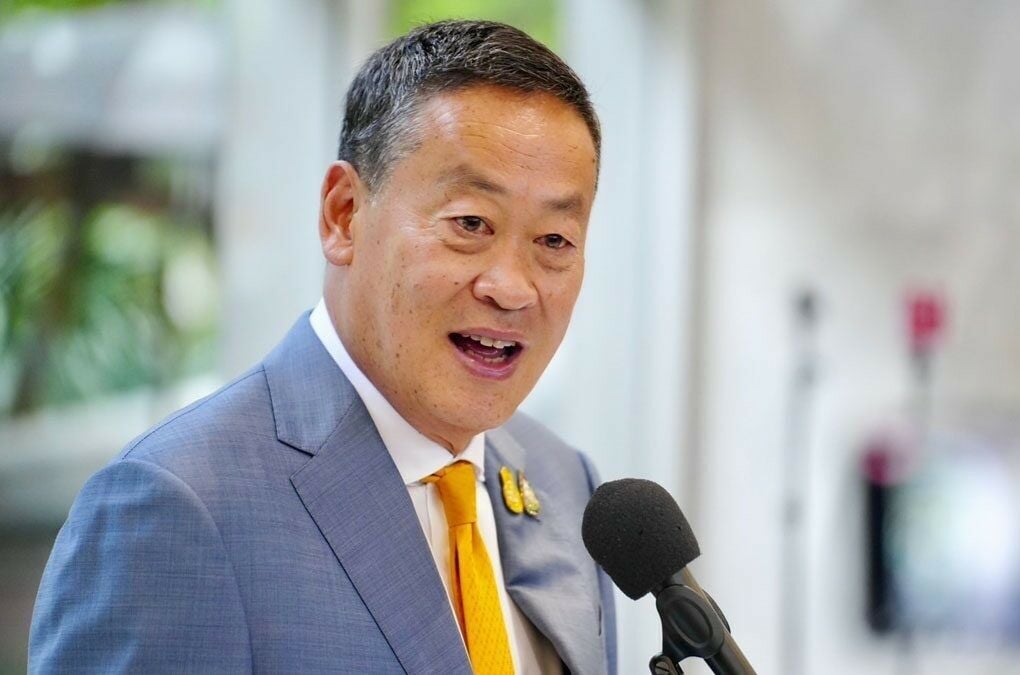Thailand aims to become regional aviation hub by 2030

Prime Minister Srettha Thavisin unveiled a vision to transform the country into a regional aviation hub as part of the Ignite Thailand, Aviation Hub initiative, aiming to enhance Thailand’s capacity and attractiveness in the aviation sector.
The Bangkok-born prime minister stressed the need to address existing problems before upgrading the aviation hub. Suvarnabhumi International Airport, once ranked 13th globally, has fallen to 68th over the past decade.
Despite being the world’s 24th largest economy, Thailand lags behind neighbours like Malaysia in airport rankings, and significantly behind Singapore, and Hong Kong.
The current allocation of flight slots is insufficient, causing capacity issues as Suvarnabhumi, designed for 45 million passengers annually, handled 60 million last year. Without improvements, the situation could worsen, especially with successful tourism policies.
Suvarnabhumi Airport spans 20,000 rai, featuring a main terminal and two runways built 17 years ago. Last year, the SAT-1 terminal opened, connected by tunnels, as part of the government’s vision from 17 years ago.
However, recognising the existing issues, Airports of Thailand (AOT) plans to expand the airport’s capacity to handle 150 million passengers per year by 2030. The newly opened terminal has already increased capacity from 45 million to 60 million passengers annually within six months, with a third runway set to open by October 2024.
Major expansion
The third runway will increase flight handling capacity from 68 to 94 flights per hour, with plans to expand the east-west terminals to accommodate an additional 30 million passengers annually. A southern terminal will add capacity for another 60 million passengers per year, and a fourth runway is planned to handle up to 120 flights per hour.
The total planned capacity at Suvarnabhumi will reach 150 million passengers, reflecting the potential economic boost from increased tourism.
To alleviate congestion, the government aims to reduce immigration processing times within six months and implement automated check-in and baggage handling systems.
Additional ground service staff will be recruited, with clear performance indicators to enhance efficiency. Companies managing ground services will face competition and KPI-based evaluations to ensure the best service for tourists and locals alike.
Additionally, the airport will modernise its cargo systems, aiming to double capacity and eliminate bottlenecks with advanced automation and vertical warehouse expansion. Recognising an increased demand for private jets, Suvarnabhumi will accommodate more private jets, particularly during peak seasons.
Don Mueang International Airport, another crucial hub, will be transformed into a point-to-point airport with enhanced passenger handling capabilities, increasing from 30 million to 50 million passengers by 2030. The expansion will include a new international terminal and a fivefold increase in parking capacity to 7,600 cars by 2029, with an additional 1,000 spots within three months.
Nationwide improvements
Additional improvements to Andaman International Airport are planned to support tourism in Phuket, Phang Nga, Krabi, and nearby provinces, with improved infrastructure including the Sarasin Bridge and a seaplane and ferry terminal. The airport will serve 40 million passengers, becoming a southern hub for long-haul flights.
In the north, plans include the construction of a second airport alongside planned improvements to the existing terminal of Chiang Mai International Airport, increasing capacity from 8 million to 16.5 million passengers annually by 2029.
Partnerships with airlines like Bangkok Airways, Thai Vietjet, and AirAsia will be strengthened, including co-promotions with international airlines like Emirates and Singapore Airlines. For Thai Airways, post-restructuring ambitions include becoming a top global airline, targeting top-three status in Asia.
The 62 year old prime minister’s ambitious vision reflects a comprehensive approach to transforming Thailand’s aviation sector, aiming to position Suvarnabhumi among the top 50 global airports within a year and top 20 positions within five years, reported KhaoSod.
Latest Thailand News
Follow The Thaiger on Google News:


























